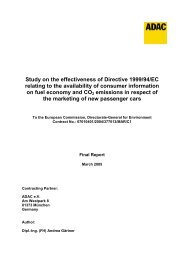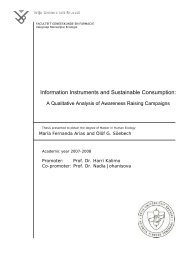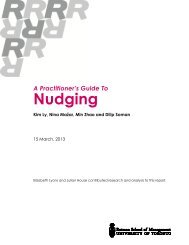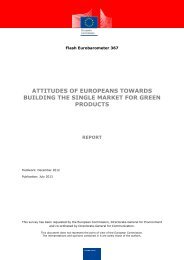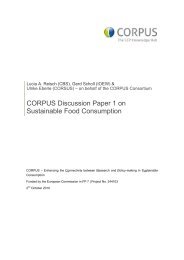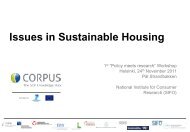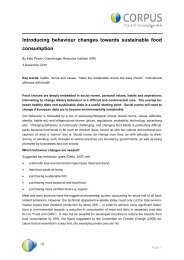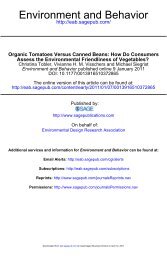Annual Report 2009 - Atmosfair
Annual Report 2009 - Atmosfair
Annual Report 2009 - Atmosfair
You also want an ePaper? Increase the reach of your titles
YUMPU automatically turns print PDFs into web optimized ePapers that Google loves.
Ongoing projects<br />
India: Electricity from biomass<br />
This 8 MW power plant in the northern federal state of<br />
Rajasthan, which is in operation since 2007, saved more<br />
than 19,000 tons of CO 2<br />
in the five months after it was<br />
registered with the UN Climate Secretariat in October<br />
2008. The verifier, TÜV, validated these numbers and requested<br />
certification by the UN. In <strong>2009</strong>, the plant ran<br />
at full capacity almost continuously, feeding more than<br />
5,000 MWh of electricity into the grid each month. This<br />
is enough to meet the energy needs of around 40,000<br />
people in India without producing CO 2<br />
.<br />
The power plant consumes 7,000 to 9,000 tons of mustard<br />
cultivation residues per month. In the past year<br />
local farmers sold the residues to the plant at a price<br />
between 10 and 15 euros per ton. This provided total<br />
revenues of approximately 1.6 million euros for around<br />
10,000 farmers.<br />
Thailand: Biogas plant<br />
Small hydropower plant in Honduras<br />
The small hydroelectric plant near Esperanza continued<br />
to run smoothly in <strong>2009</strong>. Once again we saw<br />
how important atmosfair payments often are to the<br />
success of a project. After a severe drought in Central<br />
America in the last six months of <strong>2009</strong>, less hydropower<br />
electricity was produced than expected, lowering<br />
projected revenues. The operator was only able<br />
to meet current liabilities with the help of atmosfair<br />
payments.<br />
The project also continued its environmental activities,<br />
including reforestation of the surrounding slopes<br />
and the protection of local fauna. At the same time,<br />
the community received support for the repair of the<br />
power grid.<br />
Quelle: GIZ<br />
Thailand: Biogas from wastewater<br />
A plastic membrane over the wastewater treatment<br />
pond near the palm oil mill in the south of Thailand<br />
in Chumphon traps methane and uses it to produce<br />
process heat. Methane is 21 times more powerful<br />
of a greenhouse gas than CO 2<br />
. The project was<br />
recognized by the UN Climate Secretariat in February<br />
<strong>2009</strong> and shortly thereafter by the Gold Standard<br />
Foundation.<br />
A preliminary verification by Germanischer Lloyd led<br />
to changes in the initial monitoring plan. Data was<br />
not collected from every originally foreseen location<br />
and was acquired in other intervals than first planned.<br />
Project operators therefore needed to apply for<br />
a renewed UN Climate Secretariat authorization of<br />
the new monitoring plan. For atmosfair this means<br />
that the number of verified reduced tons of CO 2<br />
will<br />
be lower than anticipated in <strong>2009</strong> and most likely in<br />
2010 as well. This has been taken into account in our<br />
CO 2<br />
balance sheet (page 17).<br />
Quelle: atmosfair gGmbH<br />
Quelle: atmosfair gGmbH<br />
India: Farmers harvesting<br />
mustard<br />
Honduras: Small<br />
hydroelectric plant<br />
Projects<br />
13



